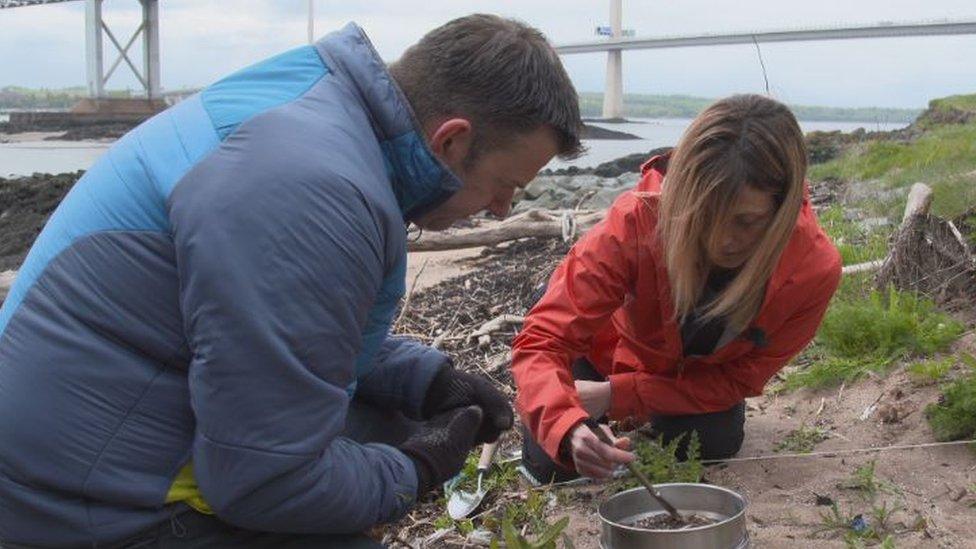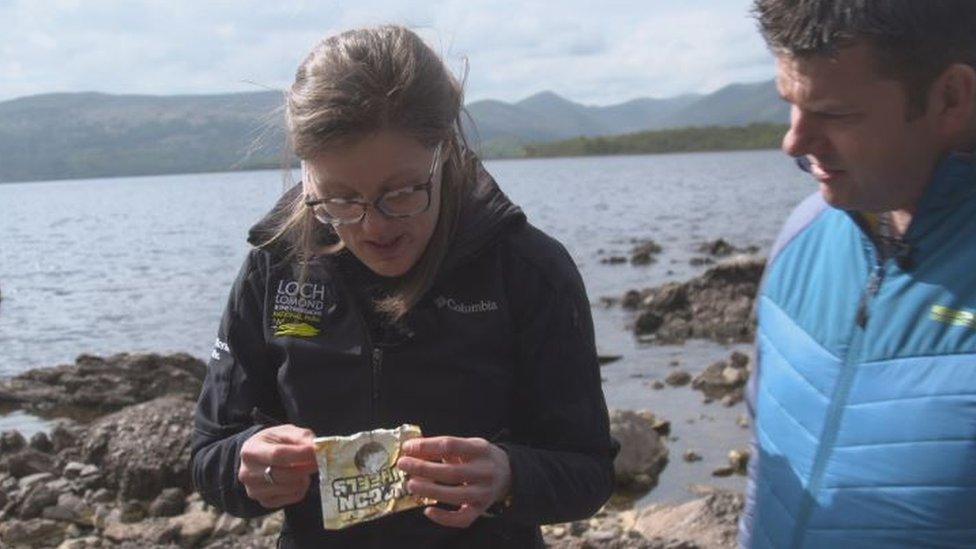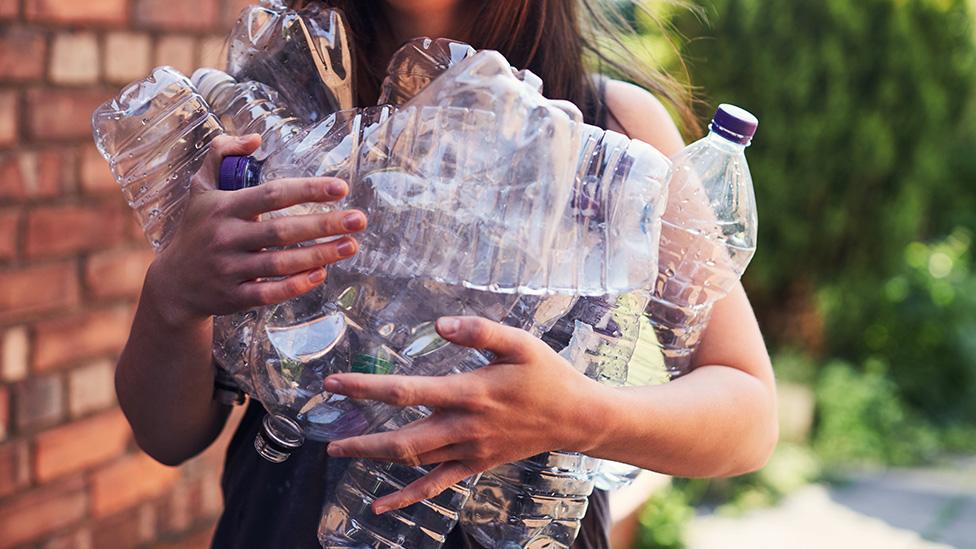Researchers find 20,000 pieces of plastic on the Firth of Forth
- Published

At Bo'ness, nurdles have become trapped in between the rocks of the sea defences
Plastic pollution on the Firth of Forth could be far worse than previously thought, according to research from Dundee University.
A study of a total of 48 square metres (517 sq ft) of beach at 16 sites counted more than 20,000 pieces of plastic.
Most of them were "nurdles" which are used in the plastic production process.
Microplastics have also now been found in the otherwise pristine waters of Loch Lomond.
Research scientist Suzanne Grimes carried out the study by scraping the top two centimetres of sand in sample areas which measured three square metres (32 sq ft) each.
Some of the plastic was litter but almost three quarters came from nurdles - tiny coloured or transparent buttons of plastic created during the production process.

The nurdles are coloured or transparent and just a few millimetres wide
Ms Grimes said: "What I found was worse than any previous attempts to gauge the scale of the plastic pollution problem had shown.
"Inspections take place but these are announced ahead of time so areas can be cleaned up. When you conduct a survey at random a different picture emerges.
"When you walk on to a beach you can see there is clearly so much more pollution out there but you choose the sites you will study beforehand so you are not prejudiced by what you see when you arrive.
"The fact I found so much plastic gives you some idea of how bad the situation is across the whole Forth estuary.
The nurdles were counted across the length of the firth and on both banks but the most prevalence was at Bo'ness.
Around 9,000 were counted there in just three square metres.
It is one of the closest locations to the plastic production and processing facilities around Grangemouth.
Responsibility for ensuring manufacturers do not pollute the seas with pellets lies with the Scottish Environment Protection Agency (Sepa).

The sand at each site was sifted and the microplastics counted by hand
A spokeswoman said: "Sepa regulates sites that produce plastic pellets and is working with pellet producers to ensure that the risk of pellet loss into the environment is minimised.
"Sepa takes this issue very seriously, and relevant operators are required to monitor for pellet loss and take action where this is identified.
"Pellets have been manufactured and used in Scotland over a considerable length of time and it is likely that some of the pellets in the environment, particularly coloured ones, are historic and due to their nature will not degrade."
Litter and microplastics
Because they do not degrade, microplastics are harmful to the environment because birds and fish can mistake them for food.
Despite being an inland body of water, low levels have now been detected on Loch Lomond.
The park authority wants to highlight to visitors that much of it comes from discarded waste.
Litter prevention manager Nik Turner explained: "What people don't make the connection with is how litter and microplastics get into fresh water and lochs.
"We're trying to make the connection between litter that's dropped on land, in car parks or after you've had your picnic on the beach and how that might wash into water courses."
The microplastics found in Loch Lomond are at a very low level and the authority insists it is still safe to swim there.
Measures like the deposit return scheme for bottles, outlined by the Scottish government on Wednesday, aim to keep plastic in circulation and out of the environment.
But there is no solution yet on what to do with the plastic that is already there.

At Loch Lomond, food wrappers almost a decade old were found on the shores
- Published17 November 2021
